Monday, October 22nd 2018
Alpenföhn Intros Matterhorn Threadripper CPU Cooler
Alpenföhn today introduced the Matterhorn Threadripper, a variant of its popular Matterhorn series tower-type CPU air coolers, which supports AMD socket TR4 (SP3r2). The cooler comes with an enlarged copper base, which offers full coverage of the Ryzen Threadripper IHS. Six 6 mm-thick copper heat pipes convey heat from this base through the aluminium fin-stack.
The cooler ships with a re-tuned Wingboost 2 120 mm fan, which spins between 500 - 1,500 RPM, pushing up to 106 m³h of air, with noise output as low as 18.2 dBA. Both the fins and the heat pipes feature a ceramic black coating that works to increase surface area for heat dissipation. A tube of Alpenföhn Permafrost TIM comes included. Measuring 138 mm x 100 mm x 158 mm (WxDxH), the cooler weighs about 1 kg. The company did not mention the thermal load limits of the cooler, and whether it's recommended for even the 250W TDP models such as the Threadripper 2990WX. The company didn't reveal pricing.
The cooler ships with a re-tuned Wingboost 2 120 mm fan, which spins between 500 - 1,500 RPM, pushing up to 106 m³h of air, with noise output as low as 18.2 dBA. Both the fins and the heat pipes feature a ceramic black coating that works to increase surface area for heat dissipation. A tube of Alpenföhn Permafrost TIM comes included. Measuring 138 mm x 100 mm x 158 mm (WxDxH), the cooler weighs about 1 kg. The company did not mention the thermal load limits of the cooler, and whether it's recommended for even the 250W TDP models such as the Threadripper 2990WX. The company didn't reveal pricing.
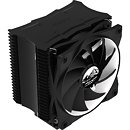
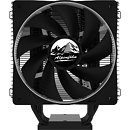
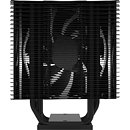
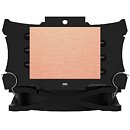
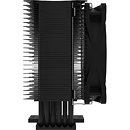
30 Comments on Alpenföhn Intros Matterhorn Threadripper CPU Cooler
Back then, a 500g heat sink was considered massive. Today it's only considered good to run mild overclocks, at best.
That said, big coolers are required because, with the smaller and smaller fabrication processes, the more the heat is concentrated within smaller areas and that needs more "grunt" to be able to dissipate.
If it continues this way, it's possible that air coolers will stop being enough (beyond stock), unless there's some sort of breakthrough with either cooler or CPU design that enables the heat to be more evenly distributed across a wider area in the socket.
AMD's multi-chip design is a good approach in this direction but i think it's still insufficient as manufacturing processes advance: would not surprise me if AMD are forced to lower clocks because of temp issues or ship / require beefier CPU air coolers with which to work @ stock. Unless ofc they pull a "9900K-like chip release" which, IMHO, would be absolutely terrible ...
Remember: being made in 7nm makes the heat much more concentrated. It may actually be one of the reasons Intel is having so much trouble with 10nm as well.
Also, I wasn't talking about density either. I was just noticing how TDP has grown over years. I understand we have more cores now, cores that are way faster. Fwiw, the same cores perform way better using way more power in laptops. Yet for the desktop, the TDP is what it is.
And that's all I meant: an observation. I suggest we leave it at that and move on?
graphene
nanotubes
monoexcongravitumalkalydictpolymerlithographs :D
Hopefully, we'll see AMD's Zen 2 not only increasing IPC while @ least maintaining clocks: fingers crossed ...
There's a reason Zen chips have temp issues when one OCs them past roughly 4.0 GHz and Zen+ when one OCs them past roughly 4.2 GHz: there's a temp wall that requires more exotic cooling to be surpassed.
By shrinking the chip's size for Zen 2, AMD will be concentrating the heat even further: i think they'll manage to have good base / boost clocks (perhaps similar with Zen+) but the OCing ability will probably suffer.
I'm not sure how they can get better stock clocks but worse OCs when their chips literally do not overclock. Unless you call making the single-core turbo apply on all cores "overclocking".
Consider that Zen has 4 times as many transistors as Bulldozer in roughly half the area, and runs way cooler. Why would heat density suddenly start lowering OC potential from where it already is if you increased density by another factor of 2?
Also with regards to the TDP of this HSF it states on their website
MATTERHORN THREADRIPPER
210W TDP
so cutting it fine in the heat dissipation sector for an 2990WX I would think
but the Olymp has an 340W TDP
I seemed to recall reading about it because the TIM would adhere better to cooler this way. Don't remember where i read that: sorry.